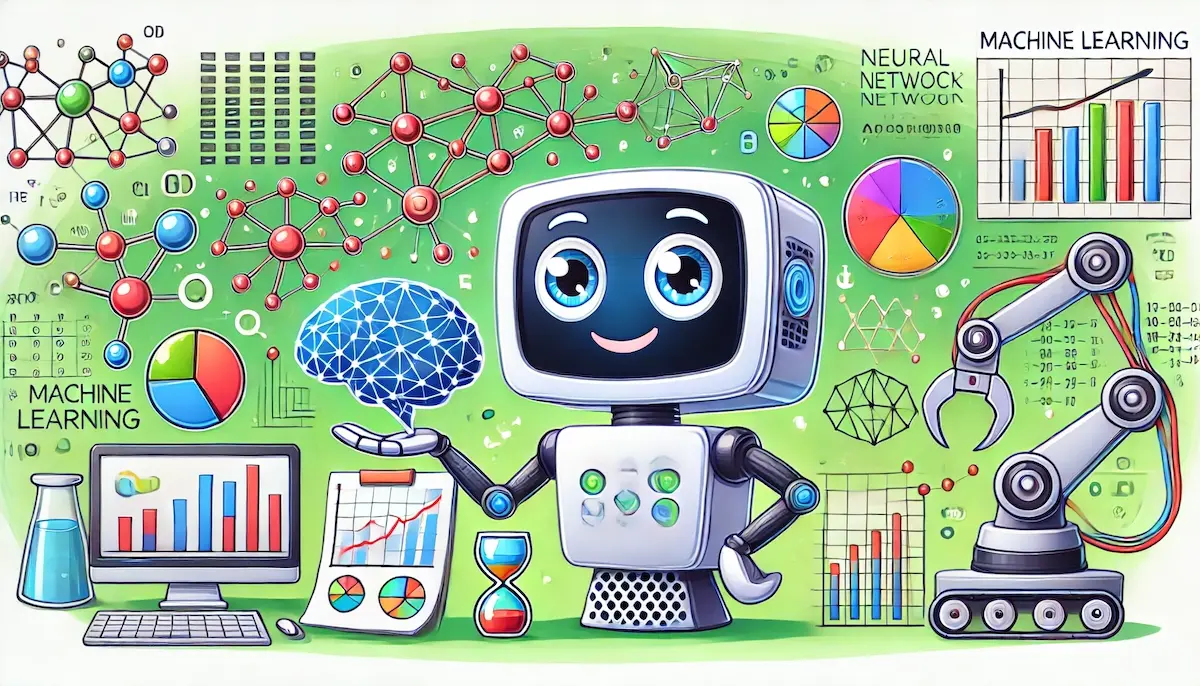Machine learning is a fascinating and rapidly growing field within artificial intelligence (AI) that enables computers to learn from data and improve their performance over time without being explicitly programmed. By recognizing patterns and making data-driven decisions, machine learning is transforming industries and powering a wide range of applications, from recommendation systems to self-driving cars.
What is Machine Learning?
Machine learning is a subset of AI that focuses on the development of algorithms and statistical models that allow computers to perform specific tasks by learning from data. Rather than following hard-coded instructions, machine learning models are trained on data, which helps them identify patterns and make predictions or decisions based on new data inputs.
Key Concepts in Machine Learning
Supervised Learning
In supervised learning, the algorithm is trained on a labeled dataset, which means that each training example is paired with an output label. The model learns to map inputs to the correct output by minimizing the error between its predictions and the actual labels. Common applications include image classification, speech recognition, and spam detection.
Unsupervised Learning
Unsupervised learning involves training a model on data without labeled outputs. The algorithm attempts to find hidden patterns or intrinsic structures within the data. Common techniques include clustering (grouping similar data points) and dimensionality reduction (simplifying data while retaining essential information). Applications include customer segmentation and anomaly detection.
Reinforcement Learning
Reinforcement learning involves training an agent to make a sequence of decisions by rewarding desirable behaviors and punishing undesirable ones. The agent learns to maximize cumulative rewards over time. This approach is commonly used in robotics, game playing, and autonomous systems.
Neural Networks
Neural networks are a class of machine learning models inspired by the human brain’s structure and function. They consist of layers of interconnected nodes (neurons) that process and transform input data to produce an output. Deep learning, a subset of machine learning, uses deep neural networks with many layers to model complex patterns in large datasets.
How Does Machine Learning Work?
The machine learning process typically involves several key steps:
- Data Collection: Gathering a diverse and representative dataset relevant to the problem at hand.
- Data Preprocessing: Cleaning and preparing the data for analysis, including handling missing values, normalizing features, and splitting the data into training and testing sets.
- Model Selection: Choosing an appropriate machine learning algorithm or model based on the problem and the nature of the data.
- Training: Feeding the training data into the model and allowing it to learn by adjusting its parameters to minimize errors.
- Evaluation: Assessing the model’s performance using the testing data and various metrics such as accuracy, precision, recall, and F1-score.
- Deployment: Implementing the trained model into a real-world application where it can make predictions or decisions on new data.
- Monitoring and Maintenance: Continuously monitoring the model’s performance and updating it as necessary to ensure it remains accurate and effective.
Applications of Machine Learning
Healthcare
Machine learning is revolutionizing healthcare by enabling early disease detection, personalized treatment plans, and efficient patient care. Algorithms can analyze medical images, predict patient outcomes, and assist in diagnosing diseases.
Finance
In finance, machine learning is used for fraud detection, risk assessment, algorithmic trading, and personalized financial advice. By analyzing vast amounts of financial data, machine learning models can identify suspicious activities and optimize investment strategies.
Retail
Machine learning enhances the retail experience through personalized recommendations, demand forecasting, and inventory management. E-commerce platforms use algorithms to suggest products based on customer preferences and behavior.
Transportation
Machine learning is crucial in developing autonomous vehicles, optimizing traffic flow, and improving public transportation systems. Algorithms help self-driving cars navigate, recognize obstacles, and make driving decisions.
Marketing
Marketers leverage machine learning for targeted advertising, customer segmentation, and sentiment analysis. By analyzing consumer data, businesses can tailor their marketing strategies to specific audiences and improve campaign effectiveness.
Challenges in Machine Learning
Despite its potential, machine learning faces several challenges:
Data Quality
High-quality, relevant, and unbiased data is essential for training effective machine learning models. Poor data quality can lead to inaccurate predictions and flawed insights.
Overfitting
Overfitting occurs when a model learns the training data too well, capturing noise and outliers, which negatively impacts its performance on new data. Regularization techniques and cross-validation can help mitigate overfitting.
Interpretability
Complex machine learning models, especially deep neural networks, can be difficult to interpret and understand. Ensuring model transparency and explainability is crucial, particularly in high-stakes applications like healthcare and finance.
Computational Resources
Training large and complex machine learning models requires significant computational power and resources. Advances in hardware, such as graphics processing units (GPUs) and cloud computing, are helping to address this challenge.
Conclusion
Machine learning is a transformative technology that is reshaping industries and driving innovation across various domains. By enabling computers to learn from data and make intelligent decisions, machine learning is unlocking new possibilities and improving our daily lives. Blockfine thanks you for reading and hopes you found this article helpful.
